How physically active are you? If we ask you to rate yourself on a scale of 1–10 for the amount of physical activity you do, with 10 being the highest and 1 being the lowest, how much would you rate yourself? If you hit the gym early in the morning and work out for 2 hours, but as soon as you reach the office you get stuck to your office chair and barely get up, let us tell you your physical activity score is no more than 1 or 2. You may have exercised in the morning, but your physical activity was negligible for the rest of the day.
Similarly, if you are moving around all day, or walking down the lanes for groceries and think you’ve done a lot of exercise for the day, that too is not real exercise; that’s physical activity.
Yes, physical activity and exercise are two different terms that are often used interchangeably, and both have their importance. Physical activity is when we move our body with the help of muscles that need energy. Exercise is a form of physical activity that involves preplanned, repetitive body movements done to improve or maintain physical fitness. All exercises are physical activities, but not all physical activities are exercises.
Our bodies benefit the most when we have a balance of both of these forms of activity. On this World Athletics Day, let’s become more aware of the importance of physical activity, exercise, and nutrition.
Importance of Physical Activity
According to the World Health Organisation (WHO), physical inactivity is the fourth-leading cause of death worldwide. You may be hitting the gym every morning, but if you find yourself sitting for long hours during your leisure, work, or commute time, you may fall into the active couch potato category. It is time for all of us to pause and reflect. Maybe the homemaker in your house is more physically active than you, despite not going to the gym or going out for a walk.
One of the best gifts you can give yourself and your loved ones is a "healthy you." And staying physically active is one of the most important things that you can do to keep yourself healthy. A larger definition of physical activity includes all general body motions performed throughout a typical day. Working, gardening, cleaning the house, and playing with your kids are all examples of physical activities. It helps improve your brain health, reduces the risk of heart disease, helps with weight management, strengthens your bones, and enhances your ability to perform everyday tasks effortlessly.
Benefits of Physical Activity
- Weight Loss/Management: Being physically active increases your BMR (Basal Metabolic Rate), the rate at which your body burns fat. This helps you reduce your fat levels and overall weight.
- Protects the heart: When cholesterol levels increase in the body, physical activity helps increase good (HDL) cholesterol levels. This good cholesterol, in turn, helps lower the bad (LDL) cholesterol.
- Management of Diabetes- Diabetes is a disorder in which an excessive amount of sugar circulates in your blood. When you exercise or do any kind of physical activity, you create the need for energy in the cells of the body. The body then uptakes this additional sugar in the blood for energy (fuel) purposes, thereby reducing the sugar levels.
Sitting Idle is a Silent Killer!
Have you heard that sitting could be the new smoking? Sedentary behaviors are those that suggest excessive idleness or physical inactivity. According to a 2019 study, if the current trend continues, sitting could eventually have the same health risks as smoking. Technology advancements have led to an increase in sedentary behaviors. Since we now have lifts, we no longer use the stairs. We don't walk as much now because we have our bikes for quick trips to the grocery store. Machines that were once created for our comfort are currently endangering our health.
Physical inactivity can double your risk of developing heart disease, diabetes, and obesity. You may also be at increased risk of developing colon cancer, high blood pressure, osteoporosis, dyslipidemia (cholesterol imbalances), depression, and anxiety.
Chronic disease is one of the leading causes of death in the modern era. Disorders that last for more than a year, impact your day-to-day life, and require medical treatment are termed chronic diseases. Regular physical activity has been proven to prevent or delay the onset of chronic diseases such as coronary heart disease, prediabetes, rheumatoid arthritis, breast cancer, constipation, erectile dysfunction, etc. In short, physical inactivity shortens your life span and also deteriorates your quality of life.
How to be More Physically Active
Want to be more physically active? It doesn't take much time; it just needs your awareness, willingness, and dedication. Follow these simple tips to be more active throughout your life.
- Take the stairs and ditch the lift. If you stay on higher floors, say the 12th, take the elevator to the 9th floor and climb up the stairs to the 12th.
- Stop using bikes or other vehicles for short distances, like trips to the grocery store or pharmacy.
- When traveling long distances, park your vehicle a few kilometers away, or when using public transport, get down one step ahead of your destination and walk.
- When in the office, walk up to the desk of your colleague instead of using the intercom. Get up and refill your water bottle instead of asking the housekeeping staff.
- A simple clue to understanding if you are being physically active, is to download a step counter on your phone and track your steps.
- Walk while you talk. Make it a habit to walk every time you answer the phone, especially if your call durations are longer or if your work calls do not require you to sit in one place.
- For every 30 minutes, get up and stretch or move.
Look out for opportunities consciously, that help you stay physically active.
What is Exercise?
Exercise is an important aspect of a healthy lifestyle. It is a more structured form of physical activity performed with the intention of staying fit. Exercise helps promote your overall well-being and fitness and reduces your risk of developing chronic diseases, thereby improving your health in general. There are different types of exercise, and each one of them has its benefits for various parts of the body.
Examples of Exercise
Let's look at the types of exercises and a few common examples of each:
- Aerobic exercise: Also known as endurance exercise, this one keeps your heart, lungs, and circulatory system healthy by improving your breathing and heart rate. It promotes overall fitness. Examples of aerobic exercises include brisk walking, jogging, cycling, swimming, and biking.
- Strength training: More muscles would mean more strength. And that’s exactly why this exercise helps you build stronger muscles. Resistance training is the other name for strength training. Examples include weight lifting and using a resistance band.
- Balance exercises: Just as the name suggests, they help your body balance better and provide stability. These exercises can help you walk better on even surfaces and prevent frequent falls due to imbalance. Exercises such as Tai chi, single-leg balance/deadlift, and standing yoga poses.
- Flexibility exercises: Stretch yourself beyond your limits is what this exercise tries to teach us. These exercises help your muscles stretch and your body loosen up, thereby preventing body stiffness. Most forms of yoga and a few body stretches are forms of flexibility exercises.
How much exercise you need to do depends on your age and medical background. The type and intensity of exercise that you do may differ from that of your friend or spouse. Make sure to take advice from a professional before beginning any form of exercise.
Tip: Always start with low-intensity and shorter-duration exercises in the beginning and level up gradually when your body’s capacity increases.
Benefits of Exercise
We have seen how physical activity helps prevent or delay chronic disorders. Exercise is a part of physical activity and has similar benefits to physical activity, like protecting the heart, preventing diabetes, preventing osteoporosis, etc. It also helps you tone your body, build your muscle mass, lower your fat mass, and improve your flexibility, stamina, and strength. Regardless of one’s age, exercise has many benefits to offer.
1. Weight Loss:
We are all aware of the most popular benefit of exercise, which is weight loss. If you have been eating clean and healthy with the intention of losing weight, you might as well include some exercise in your routine to speed up the process. Exercise helps you burn calories, thereby aiding in weight/fat loss. Diet and exercise go hand in hand when you are on a weight loss journey. A balance of both is what is going to yield your actual results.
2. Combats Health Diseases:
Regular exercise plays a major role in managing various health diseases, such as-
- Heart diseases, including high blood pressure and high cholesterol levels
- Obesity
- Pre-diabetes, Gestational Diabetes, Type 2 diabetes, etc.
- Reduces the risk of bone-related disorders such as osteoporosis, and arthritis. It also helps prevent fractures by keeping joints, ligaments, and tendons flexible.
3. Boosts Energy:
If you think you've got no energy to exercise, that's all the more reason for you to exercise. Regular exercise means better blood circulation throughout the body. Better circulation would mean better delivery of oxygen and nutrients to body tissues. Oxygen supply to cells helps with energy production. Additionally, exercising releases exercise-induced hormones, which further provide you with energy. Exercise also helps you stay fit internally as well as externally. This gives you a confidence boost.
4. Relieves Anxiety and Depression:
When feeling low, exercise might be the last thing you wish to do. What if we told you that exercise is the best and healthiest way to give your mood a boost? Exercise releases certain feel-good hormones (endorphins) in the brain along with other brain chemicals that help improve mood, thereby relieving stress and anxiety and preventing depression.
5. Improves Libido:
Regular exercise has been shown to increase testosterone (sex hormone) levels in both men and women, thereby improving their sexual lives. Exercise can help males with erectile dysfunction and women with sexual arousal. Exercise also improves blood flow to the genitals, which further promotes libido. Regular exercises can help you build stamina and strength, which are important aspects of sexual activity.
6. Promotes Sleep:
Struggling to catch a good night’s sleep? Get some exercise done during the day. Exercise has been shown to improve sleep quality by reducing the sleep onset (the time one takes to fall asleep) and also reducing the wake time at night in bed. Exercise also helps reduce daytime sleepiness, thereby promoting sleep at night.
How to Incorporate Exercise into Your Day-to-Day Life
If you are planning to get started with exercise but are confused as to how to go about it, here is what you can do.
Try exercising for about half an hour for at least 5 days a week. If you are a beginner, you may start with a shorter duration or split the time, like 15 minutes of exercise twice a day. The intensity of your workout can be low, moderate, or vigorous, depending on your capacity and comfort level. One way to determine your intensity is to focus on your breathing and overall body experience. You should be breathing a little heavier than normal while exercising, but you shouldn't be out of breath. Your body needs to feel warm, but you should not be sweating profusely.
1. Aerobic exercise to include:
150 minutes of moderate-aerobic activity such as brisk walking, swimming, or biking need to be targeted per week. You may also go for 75 minutes of vigorous aerobic activity, such as running, or aerobic dancing.
2. Strength training exercises to include:
Try to target all major muscle groups at least twice a week. Your muscles should feel the stretch after about 12–15 repetitions. Try a single set of each exercise using a weight, like heavy bags, weight machines, filled water bottles, or dumbbells. You can also try resistance tubing, resistance paddles in the water, or an activity such as rock climbing.
NOTE: If you are a beginner and have never exercised before, it is always advised to get medical clearance first. Check with your doctor to rule out any heart disease, diabetes, asthma, or blood pressure issues.
If you feel pain or discomfort while exercising, please listen to your body and stop. Do not exert yourself. Everybody is different, and so are the requirements and capacities of each body. Take it slow and give your body some time to adapt to the changes you are going to bring about.
Also, remember to warm up before the start of the exercise and cool down post-exercise, along with maintaining good hydration levels. Exercise can dehydrate you, making you lose water and electrolytes through sweat.
Along with regular exercise, being physically active will give you the best results, whether you wish to lose weight, or improve your fitness or health conditions.
Importance of Daily Nutrition
Good nutrition is just as vital as exercise, whether you wish to increase your fitness level, lose fat, or improve your health condition like diabetes, heart disease, etc. All your efforts at regular exercise and physical activity may go in vain if they are not coupled with a balanced, healthy diet. Remember? Diet and exercise go hand in hand. Opting for good nutrition would mean opting for healthier carbohydrates, leaner proteins, and healthy fats, along with sufficient fiber and hydration, and electrolytes. Avoid packaged (chips and farsan), processed (cookies, candies ), and junk (burgers, fries, pizza, etc.) food items that are rich in sugar, sodium, and fat. All of these not only build up fat stores further but can have a significant negative impact on your health.
Add healthy carbohydrates like whole grains such as wheat, oats, ragi, barley, brown rice, quinoa, etc.
Leaner protein means protein-rich foods devoid of their fat content, like including the whites of eggs and discarding the yellow ones, low-fat dairy products, pulses, etc.
Add healthy fats such as nuts and seeds (almonds and walnuts, sunflower seeds, pumpkin seeds, flaxseeds, etc.) along with fatty fish such as tuna, mackerel, salmon, etc., as they contain healthy fats like omega 3. You can also consume Omega-3 supplements to help bridge the nutritional gap.
Along with these macro (major) nutrients, including additional micronutrients such as fiber, vitamins, and minerals through other foods such as vegetables and fruits is equally important. You may also take multivitamins such as iron supplements, vitamin D3 supplements, vitamin B12 supplements, supplements for bone support, healthy gut, and fiber supplements to meet your nutritional goals.
Sports Nutrition
While the above basic guidelines for healthy eating would remain the same, your nutritional needs may differ depending on the type and intensity of exercise that you perform. This is when sports nutrition comes into play. Nutrition is the fuel you need to perform your activity. If you are an athlete, a bodybuilder, or perform an advanced level of exercise, you may need to pay special attention to the food and drink you ingest. The food or drink you consume will have an impact on your strength, performance, and recovery. Not just the type but also the timing of the meal can have a strong impact on your performance level and the body’s ability to recover post-exercise. Appropriate nutrition for active individuals is required before, during, and after a sports activity.
1. Carbs:
Stored in the muscles and liver, they are the main source of energy you would need to perform your exercise or sports. Carbohydrates are of two major types: simple (bad) and complex (good). While simple carbs provide lots of energy (calories), they do not provide any vitamins, minerals, or other nutrients. Examples of simple carbs include cakes, pastries, soft drinks, jams, candies, etc. Complex carbohydrates, on the other hand, provide energy along with fiber, vitamins, and minerals. Examples of complex carbohydrates include quinoa, oats, whole grains, etc. Around 50–60 percent of your total calories (energy) need to be supplied by carbohydrates. Make sure you make the right selection.
2. Proteins:
Proteins are the building blocks of our muscles, bones, skin, tissues, and organs. They are made up of amino acids. Food sources of proteins are mainly divided into plant-based protein sources like dals, pulses, and beans and animal-based protein sources like dairy, poultry, meat, and sea foods. When we eat these protein-rich foods, the body further breaks them down into amino acids for absorption. If our protein intake is insufficient, our body breaks down muscle mass to obtain these amino acids. Not only is a protein required to prevent muscle breakdown (loss), but it is equally important for muscle building and recovery post-workout. Regular exercise, when coupled with sufficient protein intake, helps bulk up muscle stores. Protein shakes are also a quick and easy way to replenish your stores post-workout. The fitness industry has come up with various protein powders as supplements for athletes to meet their increased protein demands. For a long time, animal proteins were considered the best source for their amino acid profile, but recent studies have revealed that a few plant-based proteins are equivalent to animal proteins. If you are a vegan or vegetarian, there are a lot of plant-protein supplements available on the market.
3. Water & Electrolytes:
When you exercise, your body temperature rises. To cool down, your body tries to produce sweat. As the sweat evaporates, the body’s temperature comes down, but along with sweat, body fluids, and electrolytes are also lost. This lost fluid needs to be replenished to avoid dehydration. By maintaining optimum hydration, you can ensure the maintenance of body temperature, reduce heat stress, and maintain your performance levels. Water is the best fluid for maintaining hydration. However, some athletes prefer to opt for sports drinks that contain carbohydrates along with electrolytes. Such sports drinks may be beneficial for athletes who perform high-intensity or vigorous exercise. Some of these sports drinks are also loaded with sugar, so read the label carefully if you too plan to have one.
4. Fuel Up Pre-Exercise:
You wouldn’t drive a car without putting in fuel, right? That’s exactly what you need to do with your body. Choose to opt for whole grain cereals combined with low-fat milk, whole wheat toast, whole wheat pasta, brown rice, or fruits and vegetables at least an hour before exercise. If you are running short on time, eating a fruit like an apple or banana just 5 minutes before should also suffice.
Avoid high-fat foods and unhealthy fats like saturated fats, trans fats, or even excessive proteins pre-workout. They may take longer to digest, which may divert your blood flow from your exercising muscles to your stomach or may also cause gastric discomfort. The trick is to eat slow-digesting carbs to avoid feeling sluggish. You may take some energy supplements for an instant energy boost.
5. During Exercise:
Whether you perform a low- to moderate-intensity exercise or are an athlete, maintaining hydration through slow sips of water throughout is vital. You do not necessarily need to eat during a workout/ exercise, or sports session if it's less than an hour. However, for vigorous exercise or high-intensity workouts, eating between 50 and 100 calories through complex carbohydrates like low-fat yogurt, raisins, or bananas every half hour is recommended.
6. Post Exercise:
After your sports event, refueling your body with sufficient fluids, carbohydrates, and proteins is essential. Apart from drinking water for fluid replenishment, 100% orange juice will also help. It will provide some additional energy and serve as a good source of potassium (an electrolyte). When you exercise, you burn a lot of calories. Within 20–60 minutes post-workout, your muscles can store carbohydrates and proteins as energy. So focus on eating a combination of carbs and protein, like fruit and yogurt, or a milk-based cereal like oat porridge or a fruit smoothie. You may add protein powders to your smoothies if you wish to bulk up your muscle stores.
Long Story Short
Pre-workout: Eat a combination of carbs and protein 1-4 hours prior.
During workout: 50-100 gms carbohydrate if the workout lasts more than an hour.
Post-workout: Eat a combination of carbs and protein within 60 minutes of the workout.
Wrapping Up
Still, sitting idle? It's time to get up and get moving. This World Athletics Day, pledge to start exercising regularly. No time to exercise? Start with small and shorter durations. Prioritize your health above all and take action to be at your best. Do not treat exercise as an extracurricular activity; rather, make it a part of your day-to-day routine. And while doing so, do not forget to pay attention to your nutrition as well.
References
https://medlineplus.gov/ency/article/002458.htm
https://blog.orchardhospital.com/why-is-physical-activity-nutrition-important
https://www.spectrumhealth.ie/blog/the-importance-of-sports-nutrition
https://www.opensciencepublications.com/fulltextarticles/IJN-2395-2326-3-147.html
https://research.med.psu.edu/oncology-nutrition-exercise/patient-guides/exercise-vs-activity/
https://www.hopkinsmedicine.org/health/conditions-and-diseases/risks-of-physical-inactivity







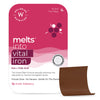
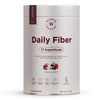
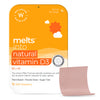





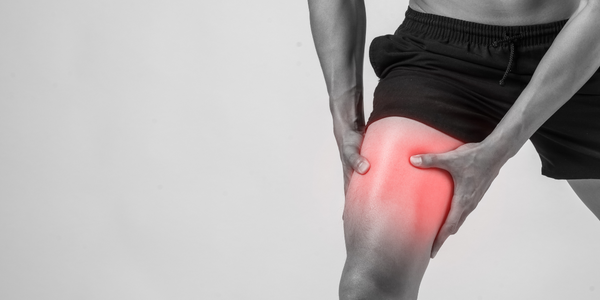
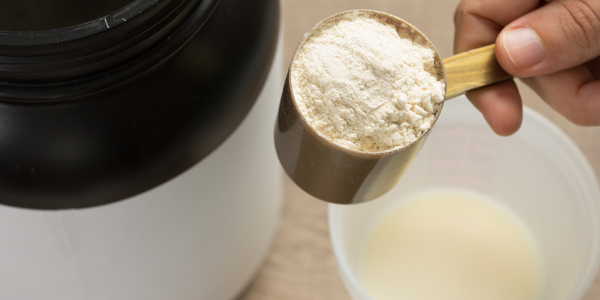
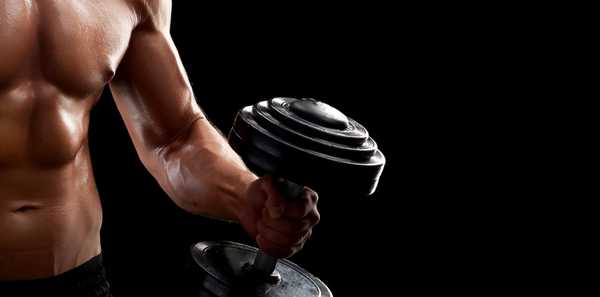
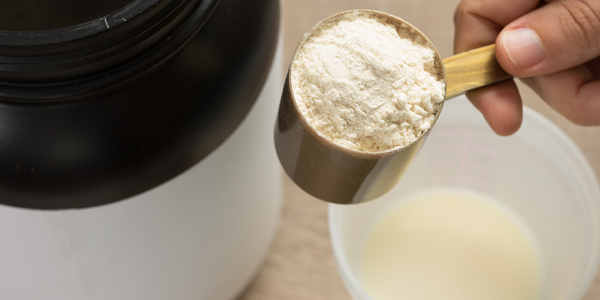
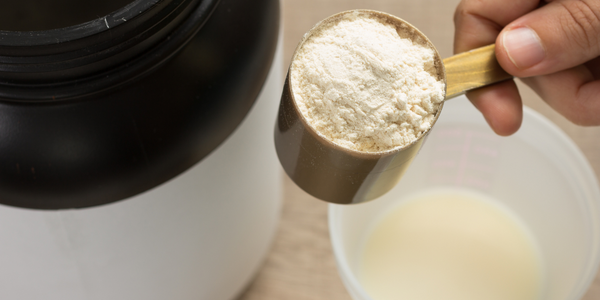
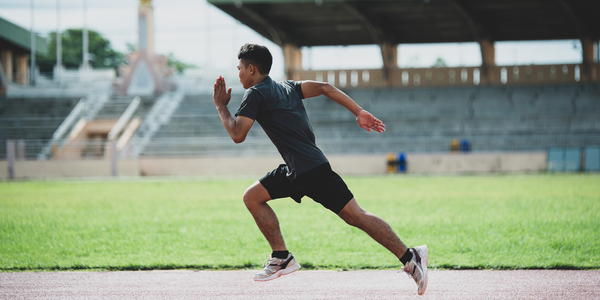
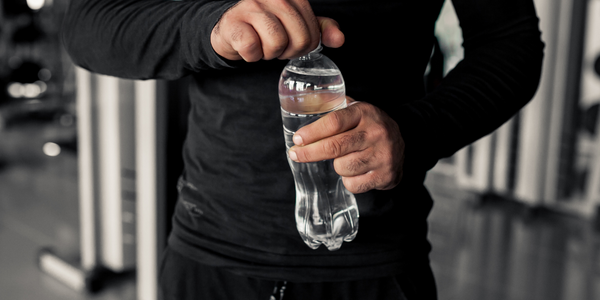
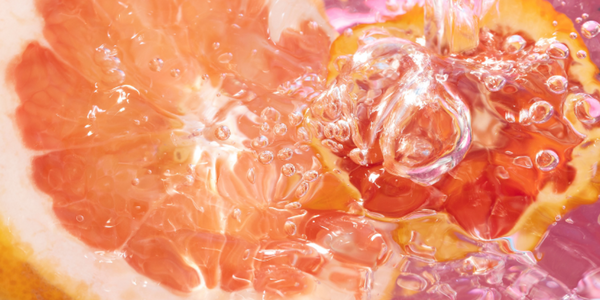
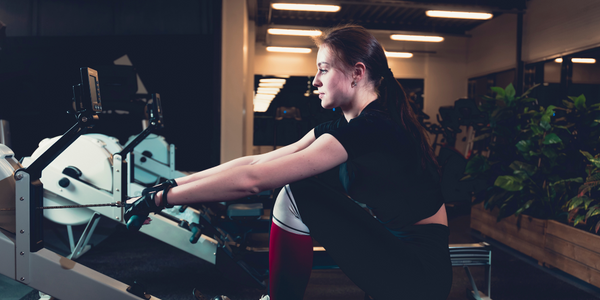






 DOWNLOAD NOW
DOWNLOAD NOW
